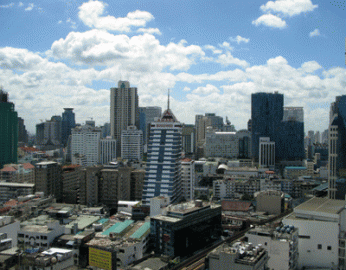High yielding securities in a low interest rate environment.
Consider the 80 year period of 1925 to 2005. A time epoch with several world wars a great depression, plus much more.. and whatever we will end up calling what we now have. Surely the 20the century and since have been one of the most tremulous periods in man kind history. Including almost tireless boom and awful busts periods.
Had one invested $1 in short term US treasury bills all along, by year 2005 this would have yielded 3.7% annually and be worth 18 US$. Barely keeping up with inflation, which was 3% during this same time. Had one invested in long term US treasury bonds the value by 2005, would be $71, or a 5.8% return. An equal investment for this same 80 year period in a broad basket of stocks, would have yielded 10.4% per year and be worth $2658 by 2005*. “And if had invested in a broad portfolio of the stocks the stocks in smaller companies you could have earned even more” *. Further, there has never been a 20 year period were bonds/or fixed savings, outperformed stocks. Similar studies have showed the same in most other countries. This all assumes a fully invested approach during the entire time.

To long term investors the most important theme is in not getting carried away at major tops and booms -and most of all not to walk away and sell-out around bottoms! Similar studies show that missing even one major up-turn (which can happen in a few months) results in significant performance loss.
“In 30 years in this business, I do not know anybody who has done it successfully and consistently, nor anybody who knows anybody who has done it successfully and consistently.” John Bogle Chairman of the Vanguard Group of Investments. Regarding market timing.
I do not here suggest that one should just be fully invested at all time. Surely there are times to take some profits off the table and diversify into something else, or just sit in cash for a while. Just as there are periods, when stocks are so cheap that it pays to be overexposed. The problem is, most investors do the opposite. They get excited when markets are hot and panic out when markets are dismal. By doing the opposite of the crowd substantial returns can be earned…by just following the crowd substantial dents in performance happens over time. We are at such a time now.
Surely there is the human factor, call it the nudge factor*. In this excellent book the authors show when Sweden privatized its social security system (year 2000), it had the right idea, but its populace had too many choices. The default choice offered of an index fund, ended up doing best ever since. Instead, people there were encouraged to “pro-choice” make selections and so many ended up biasing technology funds which at the time were hot. Yet, the lowest fee index funds did not overweigh what was in fashion -and so performed best. This among other examples show that most people seem by heart to be “momentum investors” and then usually get the trend wrong by expressing most of their conviction just at the wrong time; indeed often at market tops and bottoms. As this book shows: “Individual investors tend to be trend followers rather then good forecasters....the worst feature of the Swedish plan was the decision to encourage participants to choose their own portfolio’s.” **
While stock prices are volatile and in the shorter term sentiment driven, along with their cycles; over time, say some years, earnings and so good dividend yields more then anything else determine their future value. If we enter as I believe a longer period of lower global and Thai interest rates, high cash dividends will be the cherished.
Just now its fashionable to some to remain very bearish on stocks, yet again. Some are calling for a longer term secular bull market in global stocks….others, for “the next shoe to drop”. The rational seems to be that the Western economic recovery will be at best fragile and so likely delayed and thereby stock prices will hibernate or worse.. well perhaps so.
However, these viewpoints do not hold-up well when considering the present very low p/e ratio’s on Thai growth stocks…along with their near double digit dividend yields and an environment of renewed low interest and inflation rates. And mostly in industries which have little or no exposure to the West.
These selections trade at 2009 p/e’s of 3-6 and so remain the investment bargains -which go begging. One has to go to a country like Nigeria or some other African hinterland to find equally low priced stocks. It just does not make sense that Thai growth companies with their low gearing ratios and low western exposure should have this low valuation all in an environment of near record low interest rates. Rationally so, P/e’s are inversely related to interest rates. The lower the interest rates in an economy the higher the p/e should be!
And if the western world does stagnate for some time, global interest rates will remain low. And so, high yielding securities, like many Thai growth stocks, should become an asset of choice.
My own view remains that perhaps more boredom on my picked stocks here is probable, but due to these being so historically lowly valued, they deserved to be owned, rather then sold.
Best Regards,
Paul Renaud.
* USA’s S&P 500.
* * From “NUDGE “ By Thaler & Sunstein (Penguin Books, 2008). This is an excellent book which shows why and how most get it wrong.

